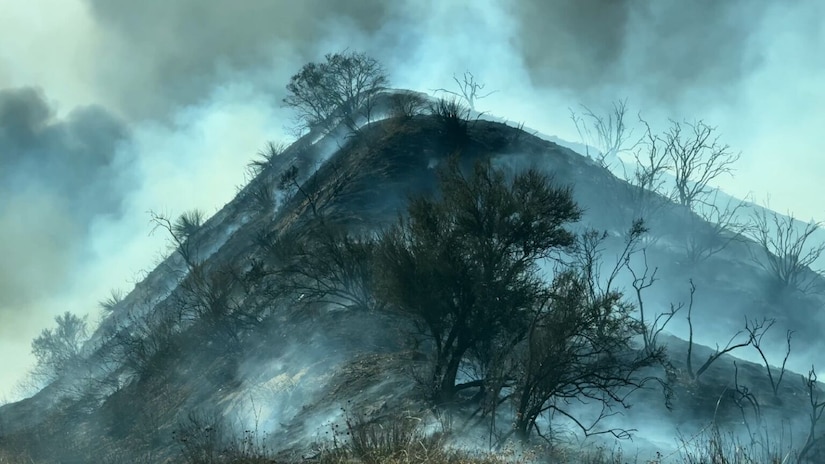This event is more than a freak accident. It is a case study in how modern hiking culture, institutional shortcomings, and human decision-making collide in the high country. The tragedy demands a serious examination of what back-country travel means in an age of unpredictable climate shifts, overcrowded trails, and global adventure tourism.
The O Circuit and Its Challenges
The O Circuit, also known as the Paine Massif Circuit, is a 130–140 kilometer trek that encircles the mountain massif in Torres del Paine. It ranks among the most iconic long-distance treks in South America and is celebrated for its glaciers, granite towers, and remote ambiance. But this beauty comes with risk. The trail includes long, exposed stretches far from assistance, and the crossing of John Garner Pass places hikers above treeline and vulnerable to sudden weather changes.
On November 16 and 17, approximately 30 hikers left the Los Perros campsite to cross the pass. Early conditions appeared stable, though several forecasts warned of worsening winds. As the group gained elevation, weather deteriorated rapidly—snowfall intensified, gusts turned violent, and ice formed across the trail. Euronews and other outlets reported that many hikers became disoriented during the ascent, losing sight of the trail and one another in the blinding whiteout. Some attempted to turn back, while others pressed forward in the hope of reaching the next valley.
System Failures: When the Safety Net Collapses
Several systemic failures contributed to the severity of the incident.
First, despite early warnings, the pass was not closed. Reports from survivors indicated that campsite staff, rather than trained rangers, provided weather assessments that suggested conditions remained safe. Complicating matters, Chilean national elections occurred that weekend, and many park rangers were reportedly off duty to vote. As a result, no official decision was made to halt trekkers or restrict access.
Second, once the storm hit, search and rescue resources were delayed. The first to render aid were other hikers on the trail who risked their own safety to locate missing companions. Professional rescuers arrived hours later due to the dangerous conditions and the remoteness of the pass. Several hikers who succumbed to exposure likely died during this critical window.
Third, communication systems were insufficient for such an isolated environment. With no cellular coverage and no mandatory tracking or check-in protocols, officials lacked real-time awareness of where hikers were located. Journalistic reconstruction by ExplorersWeb and Outside Magazine highlighted that the absence of ranger monitoring and emergency shelter access contributed significantly to the fatalities.
The Human Dimension: Choices, Culture, and Consequences
Beyond institutional breakdowns, the tragedy reflects deeper issues in modern outdoor culture. The O Circuit is a global “bucket-list” trek. It is heavily marketed through adventure blogs and social media, often portrayed through idealized images that obscure the harsh realities of Patagonia’s weather.
This cultural framing can influence decision-making. Some hikers involved in the storm later shared that they felt a sense of commitment—financial, emotional, and personal—to complete the trek. Others described subtle social pressure not to be the person who turned back. These psychological dynamics, combined with incomplete information from campsite personnel, contributed to a collective push into hazardous conditions.
Survivor interviews in People Magazine and The Guardian describe scenes of chaos and terror: hikers crawling across ice while being battered by wind, attempts to construct makeshift stretchers, and moments when individuals lost sight of companions who never reappeared. These stories elevate the tragedy beyond statistics and remind us of the vulnerability of even experienced trekkers when weather and chance align against them.
Lessons for Hikers, Guides, and Park Authorities
This incident contains essential lessons for everyone who participates in hunting, hiking, camping, and other outdoor pursuits.
-
Weather literacy is essential. Checking a forecast is not enough; hikers must understand wind thresholds, storm patterns, and the signs of rapid weather change. Turning back must always remain an acceptable choice.
-
Proper emergency equipment is non-negotiable. In remote environments, hikers should carry insulating layers, emergency bivouacs, reliable navigation tools, and satellite communication devices.
-
Back-country communication systems must improve. Requiring registration, check-ins, or mandatory tracking devices on high-risk trails would greatly improve situational awareness for both hikers and authorities.
-
Guides and operators must prioritize safety over schedules. Concessionaires and outfitters should have clear authority to cancel departures in response to deteriorating weather and must provide accurate, up-to-date information.
-
The culture of outdoor adventure requires recalibration. Social media has romanticized extreme landscapes, sometimes at the expense of realism. Wilderness demands humility, respect, and an understanding that nature—not human plans—sets the terms.
A New Era of Outdoor Risk
Climate change is amplifying weather volatility in mountain environments worldwide. Patterns that once defined safe seasons are shifting, with more frequent storms, unpredictable winds, and sudden temperature swings. This trend, combined with rising global interest in adventure tourism, means more inexperienced hikers are entering environments where small mistakes can have severe consequences.
The disaster on the O Circuit signals the need for a cultural and institutional shift in how wilderness risk is managed. Without reforms—better forecasting, stronger ranger presence, clearer trail protocols, and improved rescue systems—similar incidents are likely to recur.
Conclusion
The blizzard on John Garner Pass was not merely an act of nature. It was a convergence of underestimated risk, communication breakdowns, institutional gaps, and human decision-making under uncertainty. Five hikers lost their lives because several layers of safety failed simultaneously.
Yet the wilderness is not the enemy. Its dangers are inseparable from its beauty. With stronger systems, better preparation, and a culture grounded in respect rather than romanticism, outdoor adventure can remain both exhilarating and survivable.
The lesson from Patagonia is stark but simple: the mountains are powerful, unpredictable, and indifferent. To venture among them requires preparedness, humility, and a renewed commitment to personal and collective responsibility.
References
Batista Cabanas, L. (2025, November 27). Patagonia trekking deaths raise urgent questions over safety at Torres del Paine National Park. Euronews. https://www.euronews.com/travel/2025/11/27/patagonia-trekking-deaths-raise-urgent-questions-over-safety-at-torres-del-paine-national-
Gillette, S. (2025, November 23). Survivor of deadly blizzard lost sight of friend when he fell down the mountain. People. https://people.com/survivor-deadly-blizzard-lost-sight-friend-fell-down-mountain-never-saw-her-alive-again-11854533
Knight, M. (2025, November 21). Extreme snowstorm claims five lives on Torres del Paine’s “O” Circuit. Teton Gravity Research. https://www.tetongravity.com/extreme-snowstorm-claims-five-lives-on-torres-del-paines-o-circuit/
Reuters. (2025, November 21). Five tourists killed in snowstorm in Chile’s Patagonia. Reuters. https://www.reuters.com/sustainability/climate-energy/chile-rescuers-search-tourists-lost-patagonian-snowstorm-two-reported-dead-2025-11-18/
The Guardian. (2025, November 26). Australians tell of Chilean mountain horror where five hikers perished. The Guardian. https://www.theguardian.com/world/2025/nov/26/australian-hikers-chilean-mountain-blizzard-survival-stories
ExplorersWeb. (2025, November 22). The Torres del Paine tragedy: A timeline of what happened. ExplorersWeb. https://explorersweb.com/the-torres-del-paine-tragedy-a-timeline-of-what-happened/
Outside Magazine. (2025, November 29). Analysis: System failures that contributed to the Torres del Paine disaster. Outside Online. https://www.outsideonline.com/adventure-travel/news-analysis/torres-del-paine-national-park-tragedy














